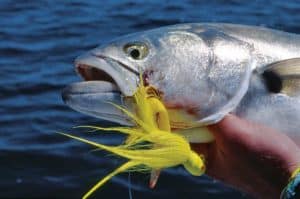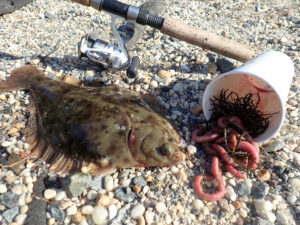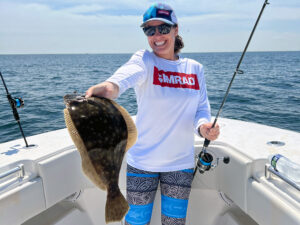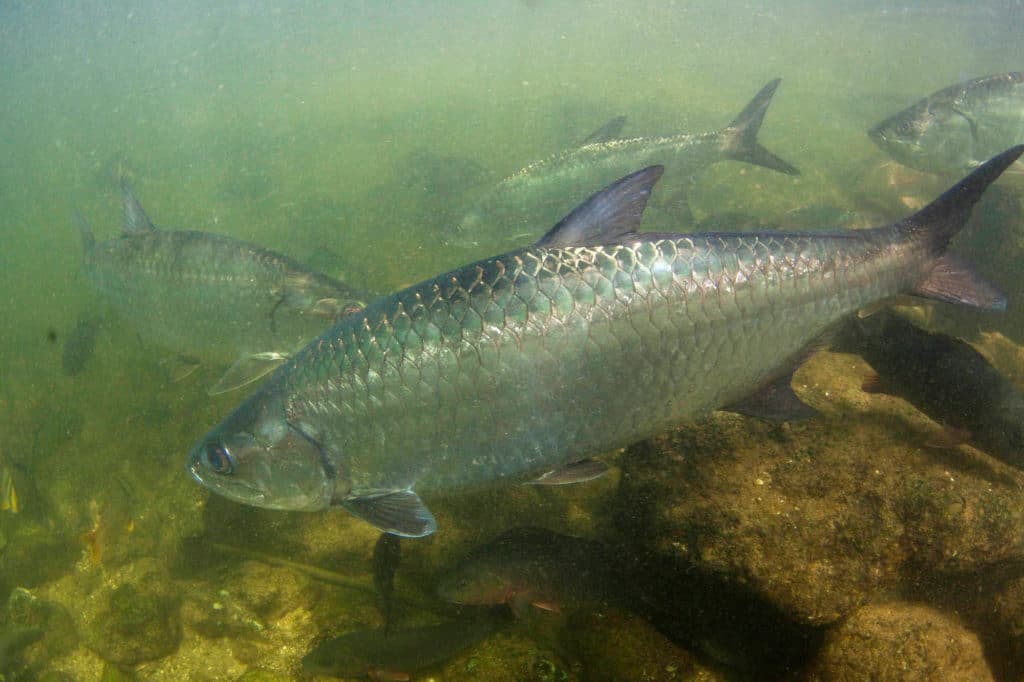
Tarpon: No word uttered on the Texas Gulf Coast stirs as much excitement for anglers. Yet, while virtually all of the region’s fishermen know about the presence of the silver king, relatively few pursue them.
“There’s a real mystique about tarpon,” says South Padre Island guide Capt. Brian Barrera. “Some people think the possibility of catching them is out of reach. But the reality is, especially down here, there are lots of tarpon, and anyone who studies up on them, puts some time in and has a little bit of luck can score on these awesome sport fish.”
Tarpon Time
The Gulf shoreline of the Lower Laguna Madre from Port Mansfield down to Port Isabel and into the Brownsville Ship Channel ranks as prime tarpon country. When waters calm from late summer into early fall, Barrera directs his focus to tarpon.
“We often start off at the Port Isabel jetties throwing lures like a D.O.A. Bait Buster. We’re optimally looking for rolling fish and sight casting to them,” he says.
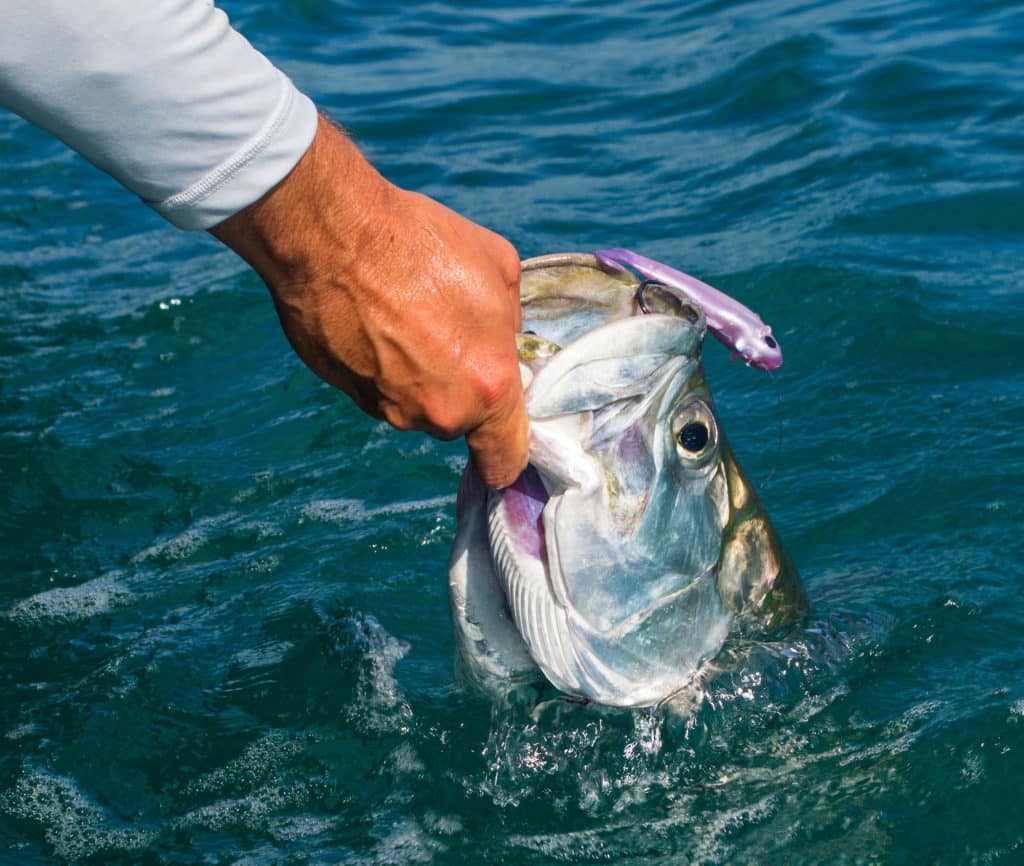
Bait Busters are a jigging-type lure that also work as swimbaits. The shallow version comes with a single upright hook and operates at a medium sink rate so you can fish it near the surface, mid-range, or on the bottom. The deep runner weighs ¾ ounces and comes with a 5/0 hook with line-entry on top of the head, which keeps the lure sub-surface for bottom bouncing.
“I’ve caught a lot of tarpon on the Bait Buster. Throwing it is a great way to start the day,” Barrera says.
Look for tarpon facing the current outside and inside jetty walls; they also hang around large eddies and deep-water current breaks caused by displaced jetty rocks. A big fish behind the rocks just off the main wall — probably a tarpon.
Tarpon take everything from Coon Pops to Rat-L-Traps and certainly well-placed flies. But sometimes only live bait lights up the bite.
“I bring a cast net and let the water tell me what to fish. Sometimes when the pinfish are thick we’ll put one on. Other times, it’s mullet. But I’ve also seen tarpon sitting in the current sucking up blue crabs funneling out of the jetties. The angler that pays close attention to what’s going on bait-wise and doesn’t have an agenda will, more often than not, do better than those with a rigid fishing plan,” Barrera says.
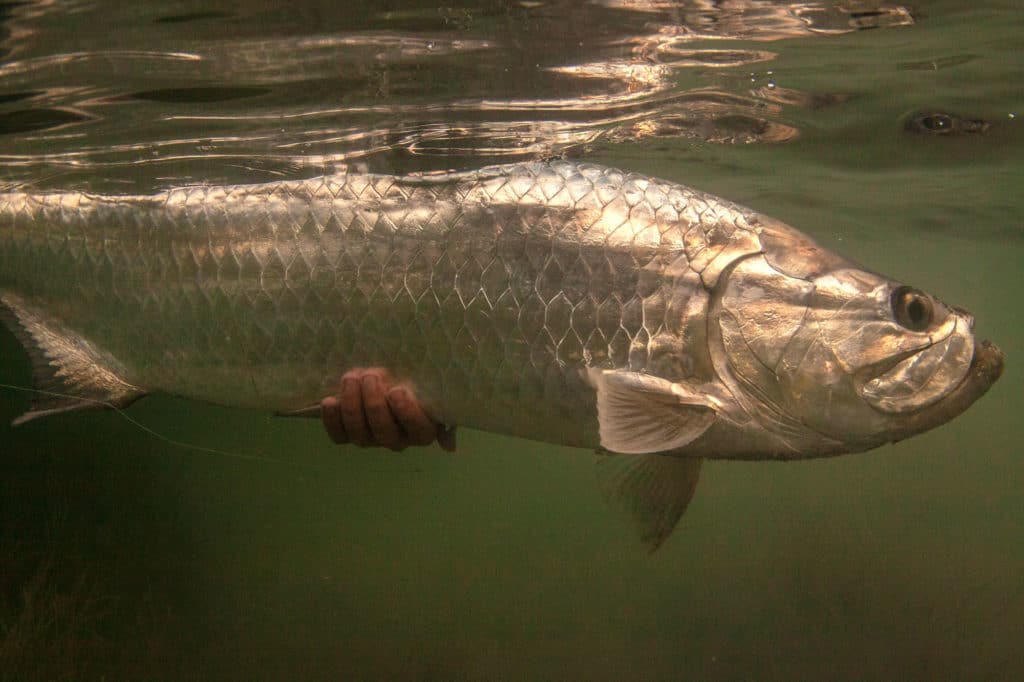
Jetty Fish
Other areas that hold tarpon this time of year include the jetties near Port Aransas and Port O’Connor along the central coast. My first encounter with a big school of tarpon occurred at the Port Aransas jetties, where 25 to 30 fish in the 4- to 6-foot class fed just a few feet off the jetty wall.
I’d like to tell you I caught one of the 6-footers but they didn’t take anything we threw at them. We tried everything in our tackle box. That’s simply the nature of tarpon: aloof one day and super aggressive the next.
Surprising numbers of tarpon can also be found from High Island, just north of Galveston, down to Surfside, near Freeport. Anglers affectionately call this “Tarpon Alley.’’ Fishing a mile to 5 miles from the beach can prove productive, if you can get past the sharks and rough seas. Anglers often drift live or dead bait — usually mullet, pinfish or sand trout — through schools of menhaden that dominate the area during summer.
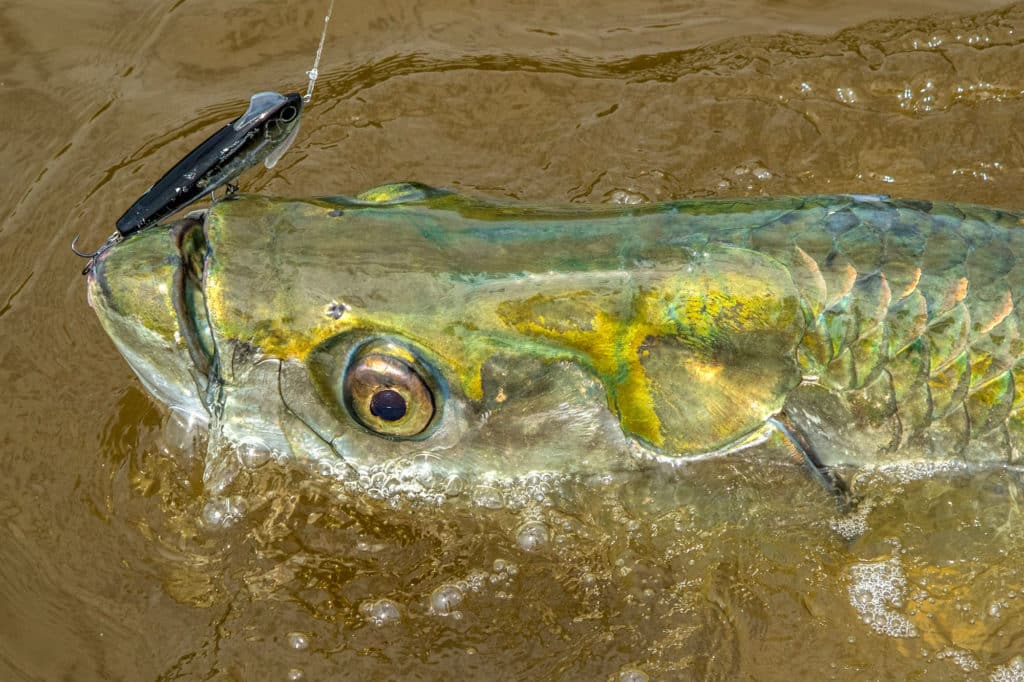
Tarpon Studies
Aaron Adams with Bonefish & Tarpon Trust (BTT) says that while many mysteries still cloud tarpon migration and life history, studies such as one conducted several years ago by Lucas Griffin and Andy Danylchuk provide some fascinating answers.
The researchers attached acoustic receivers to the ocean bottom throughout the tarpon’s range. These receivers detect signals from acoustic tags surgically implanted into tarpon. In Texas, listening devices were positioned from the Louisiana border to the Mexico border on the outer edge of every major bay system.
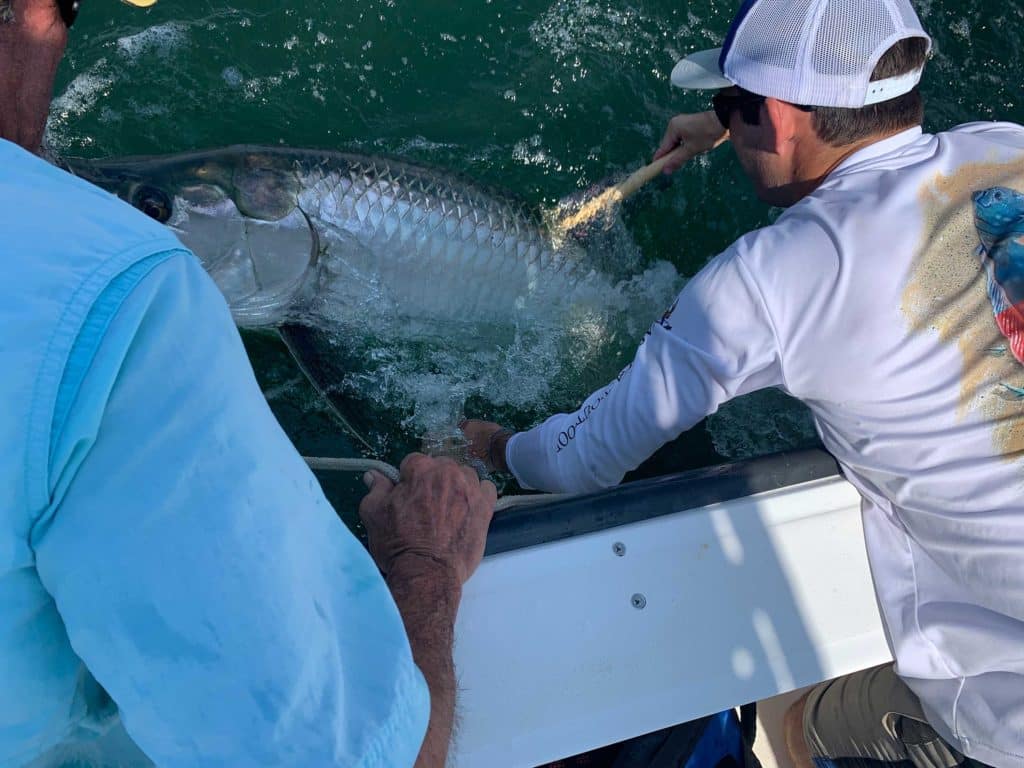
“The transmitters are the size of a AA battery and have a lifespan of five years, meaning not only can we implant them in a wide size range of tarpon, including those around 15 pounds, we can also track them over multiple years,” Griffin and Danylchuk wrote. “As the tarpon swims past the network of receivers, a unique ID code and date and time are saved on the receiver.
“With thousands of these receivers deployed across the Gulf of Mexico and southeastern United States, we can now track tarpon across the Gulf and adjacent waters and build a more detailed understanding of what really makes a tarpon move or, in some cases, stay,” the researchers say.
Results show a southern migration of Texas tarpon toward Mexico each fall. The Mississippi River Delta appears to divide east and west populations.
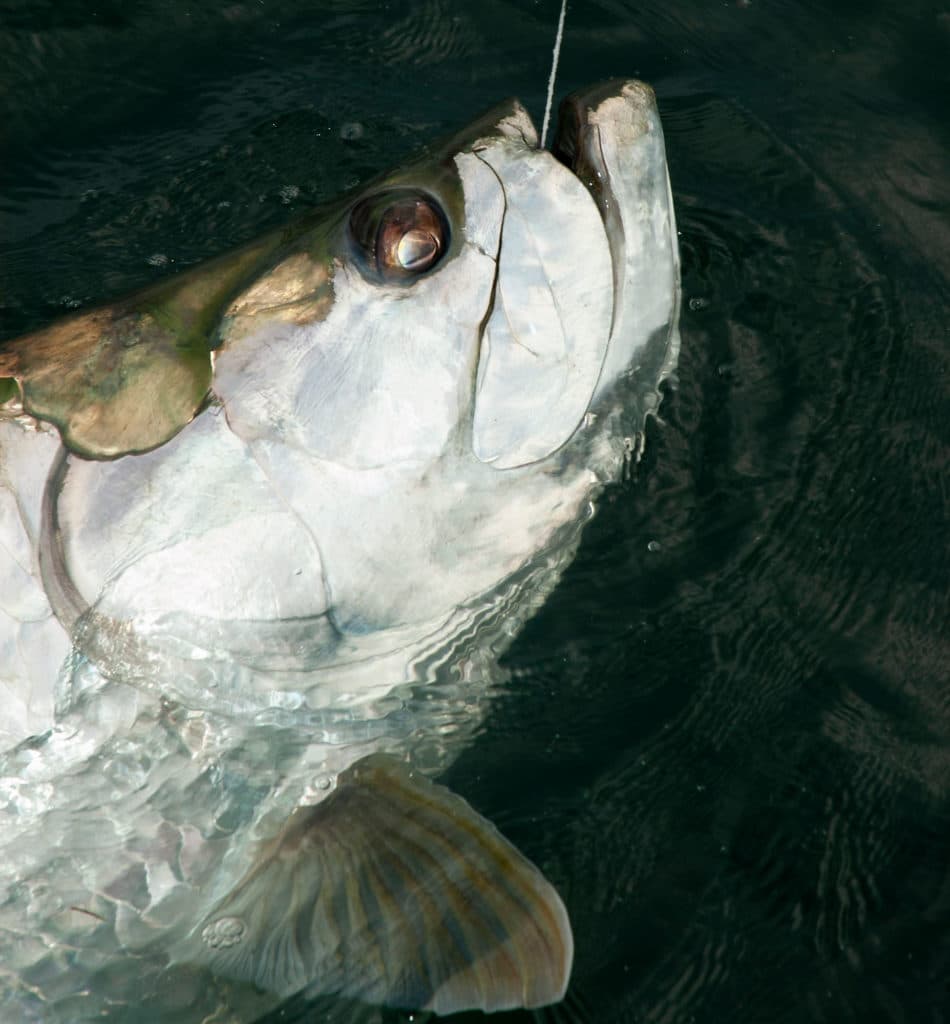
Massive Monsters
Barrera says he sees bigger fish arrive off South Padre a little later than smaller ones. True monsters show in August and September. He sight-fishes for these behemoths, spending as much time on the water as possible to decipher their patterns.
Read Next: More Tarpon Fishing Tips
The current state record, caught by Michael Shane LaRue II in 2017, measured 90 inches long and weighed 229 pounds.
“The biggest fish I’ve had in my boat was easily over 200 pounds,” Barrera says. “It was an absolute monster. Its scales were as big as my hand. In Texas, we can keep one tarpon 85 inches or larger, which lines up with a potential record fish.
“I didn’t know if it was a record or not. It was on the bubble. It was a true monster but to me it was better to see that fish go back to maybe even get bigger and thrill another angler.”
That kind of conservation ethic as well as support from groups like BTT appear to be generating a tarpon renaissance of sorts in Texas. As more anglers learn that they too can enjoy the tarpon action, fishing dreams will come true and appreciation for this already legendary species will grow. And that’s good for Texas anglers and the silver king.

